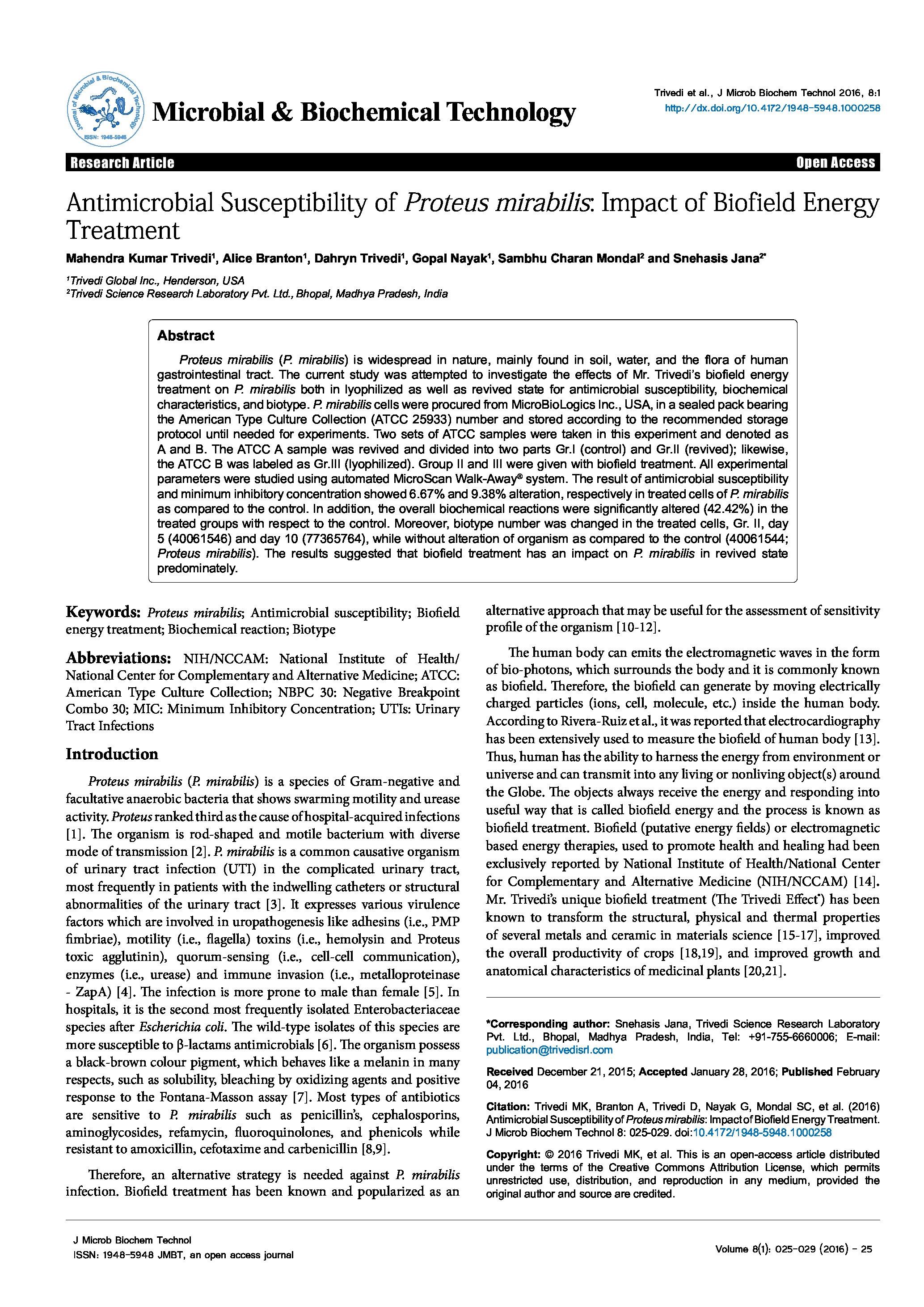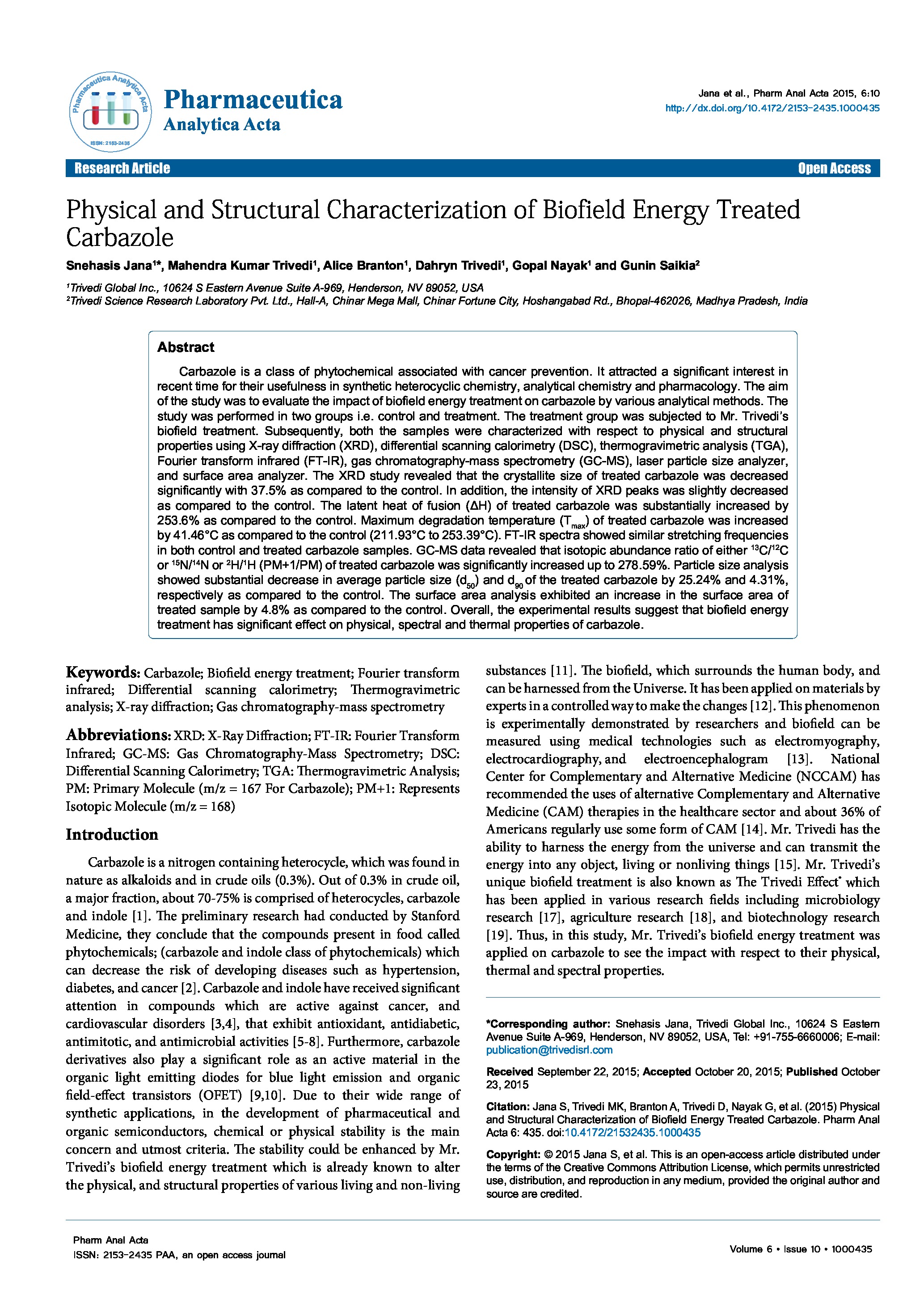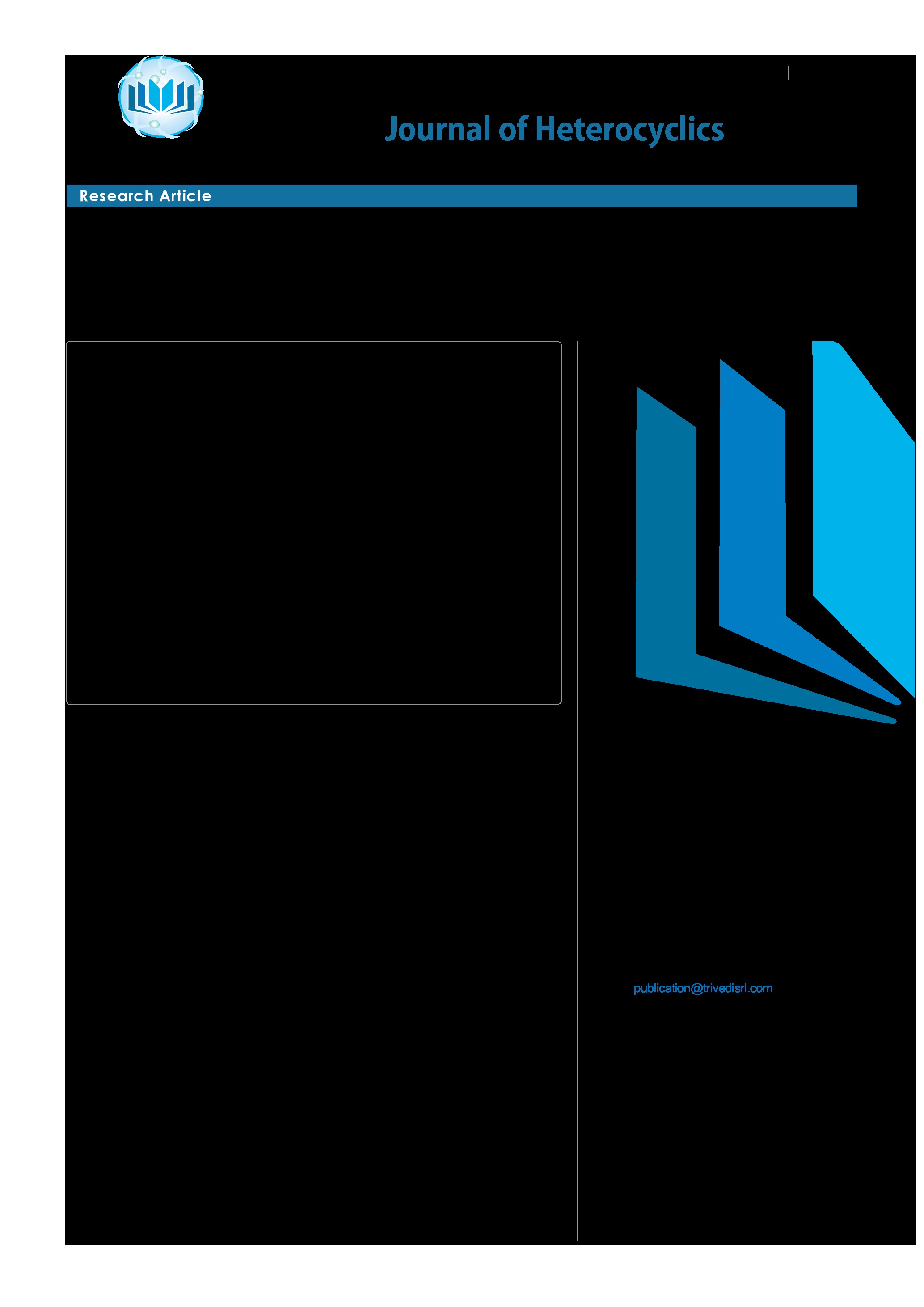Date of upload:
15.12.2016
Co-author:
Mahendra Kumar Trivedi, Alice Branton, Dahryn Trivedi, Khemraj Bairwa, Snehasis Jana
Abstract:
The methylsulfonylmethane (MSM) is an organosulfur compound having sulfonyl functional group. It is occurred naturally in some primitive plants and used in disease related to chronic pain, inflammation, and arthritis. This study was attempted to evaluate the impact of biofield energy treatment on the physical, thermal, and spectral properties of MSM. The study was performed in two groups viz. the control group was remained as untreated, while the treated group was subjected to Mr. Trivedi’s biofield energy treatment. After that, both the control and treated samples were analyzed using surface area analyzer, X-ray diffraction (XRD), thermogravimetric analysis-derivative thermogravimetry (TGA-DTG), differential scanning calorimetry (DSC), and Fourier transform infrared (FT-IR) spectroscopy. The surface area analysis exhibited a significant decrease in the surface area of treated sample by 22.96% as compared to the control. The XRD analysis showed the significant increase in average crystallite size by 49.20% in the treated sample with respect to the control. The DSC analysis showed the significant increase (67.20%) in latent heat of fusion of treated sample with respect to the control. The TGA analysis showed the onset temperature of thermal degradation at 170°C in the control sample that was slightly decreased to 168.05°C after biofield treatment. Moreover, the Tmax (maximum thermal degradation temperature) was also decreased slightly from 186.66°C (control) to 183.38°C (treated). This indicated the early phase of vaporization in treated sample as compared to the control. The FT-IR spectroscopic study exhibited the alteration in wavenumber of S=O group that suggests the effect of biofield treatment on force constant and bond strength of MSM molecules.
Altogether, the surface area, XRD, thermal analysis and FT-IR spectroscopy suggests that Mr. Trivedi’s biofield energy treatment has the impact on physical, thermal, and spectral properties of MSM.




